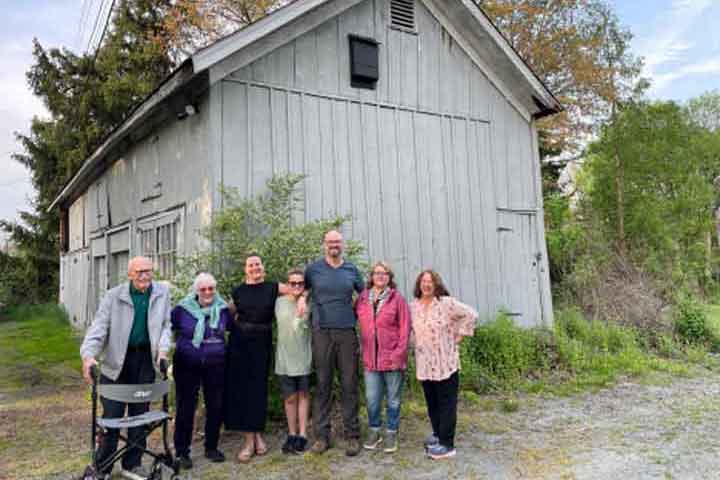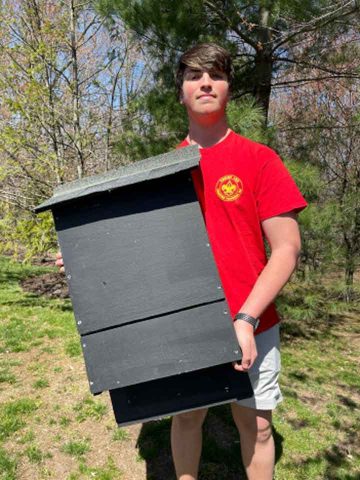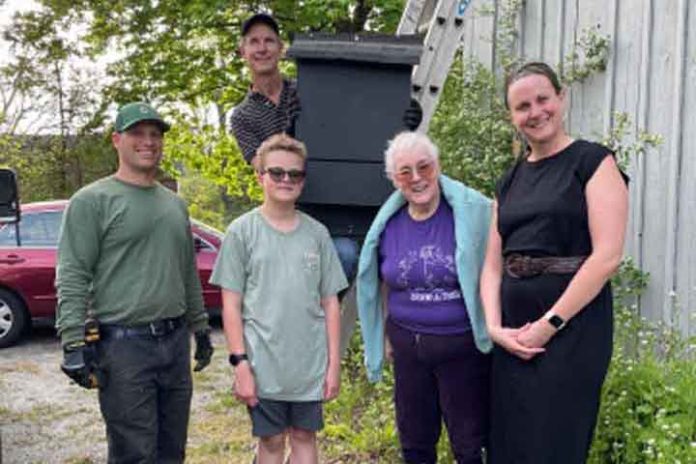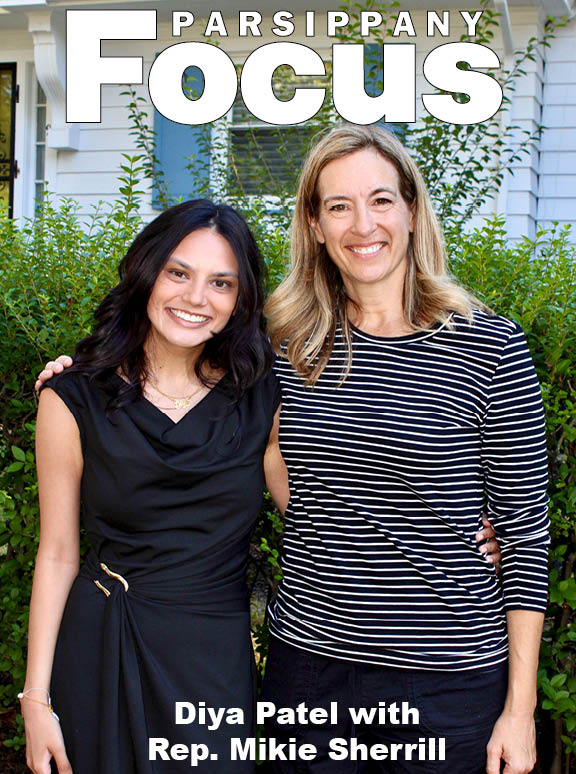PARSIPPANY — When Parsippany’s Livingston-Benedict House was built circa 1752, New Jersey’s native bats were among the few and most reliable mosquito controls. At that time, this property was a refuge to the first elected governor of New Jersey, William Livingston, who might have welcomed the relief on summer evenings, as it would be another 150 years before citronella oil came into popular use.
This week brought a return to tried-and-true insect control to this historic Parsippany estate, currently home to three generations of the Peterson family. Purchased by the 8th-great-uncle of resident Julie Peterson in 1857, this charming property on the National Register has remained in the family since then. Julie, who grew up in the home, became the owner in 2001 and, with her family (husband Bob, son Mark, daughter-in-law Emily, and grandson James) recently oversaw the installation of a bat nesting box on their 1700s barn in an area identified by the Parsippany Bat Protection Project (PBPP) as potential bat habitat.
The PBPP, an initiative of the Parsippany Green Team, has spearheaded several initiatives to enhance habitat within the Township for New Jersey’s native bat populations and to bring community awareness to the importance of bats in the ecosystem. In October of 2021, the PBPP hosted the first of its kind “Batapalooza and Parsippany GreenFair” at the Parsippany Main Library and followed that with an initiative to plant native vegetation and install bat nesting boxes in Parsippany parks [including Jannarone Park, Volunteers Park, Lake Parsippany Park, and Lenni Lenape Park at Knoll Country Club.] The PBPP hosts annual educational “bat walks” at Wildlife Preserves’ Troy Meadows in Parsippany, with the next Bat Walk scheduled for July 13th, 2024. These events feature a presentation by experts from the Rutgers Wildlife Conservation and Management Program, followed by a walk at dusk to locate and identify bats in real-time.

Bats are one of the most misunderstood yet essential species on our planet. They perform an invaluable ecological function by eating up to 3,000 insects per bat per night! This dramatically reduces the need for pesticides and produces an estimated value to the country’s agricultural industry of over $22 billion annually. Unfortunately, numerous bat species may face extinction due to the deadly White-nose Syndrome fungus, killing millions of these vulnerable creatures.
This bat nesting box, installed at Peterson’s, was handmade by Whippany Eagle Scout Noah Kaplan, a first-year Environmental and Sustainability student at Cornell University. After years spent on athletic fields, Kaplan had the idea to build bat boxes to solve the insect problem that plagues youth athletes and spectators. He connected with the PBPP and built these nursery boxes last summer, using woodworking plans from Rutgers Wildlife. Through Cornell’s Outdoor Education program, Kaplan continues to employ the lessons learned as an Eagle Scout both inside the classroom and in the woods. On his college campus, he still encounters bats near the Cornell Arboretum and Beebe Lake.
Back at the Livingston-Benedict House, 11-year-old James Peterson watched excitedly as PBPP members Luca Fariello and Len Cipkins installed the new nesting box on the south-facing side of the family’s 200+-year-old barn. It is hoped that the bat box, with enough room to support a maternal colony of 300 bats, will be discovered and occupied by the resident bat population and used to expand their range of natural insect control on the property. Thanks to the continued care and attention of the Peterson family, who have been home stewards for almost 170 years, it is easy to imagine James there one day with his children, watching descendants of these bats dart across the evening sky. Parsippany is no stranger to progress, but some things cannot be improved.
Click here to learn more about the Parsippany Bat Protection Project, including information on upcoming events.
















